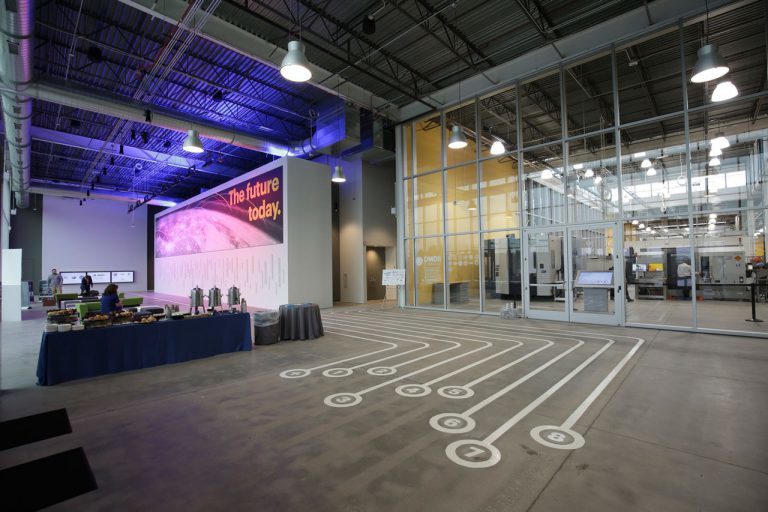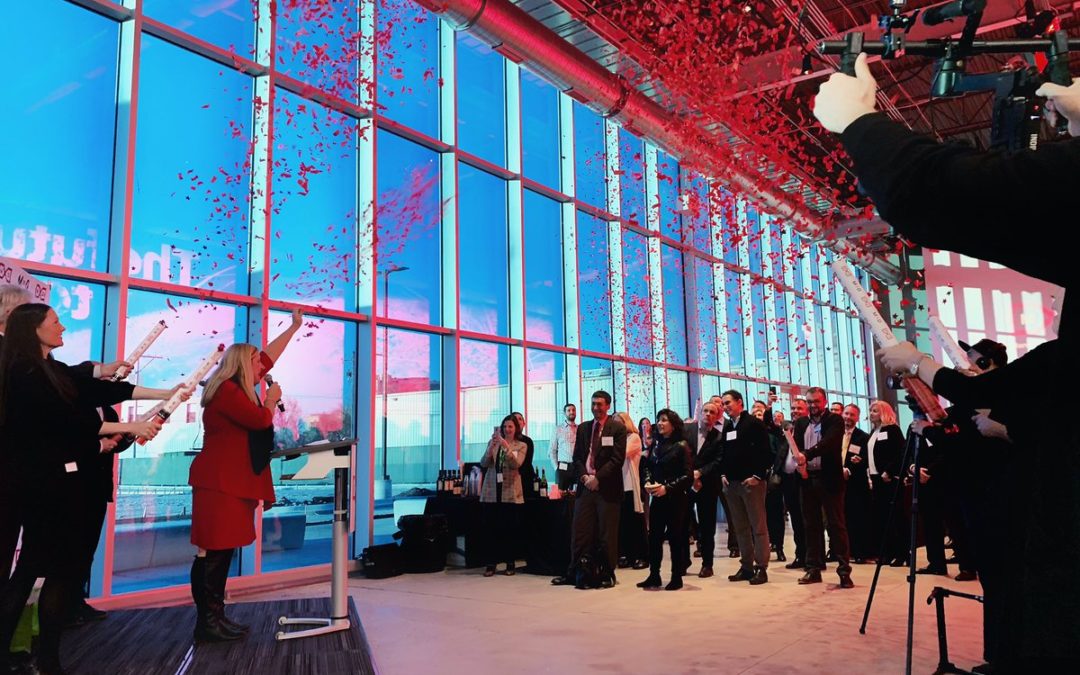Q&A WITH CHANDRA BROWN
Executive Director at MxD
In late September 2018, DMDII got a new Executive Director, Chandra Brown. Less than six months later. DMDII announced $10 million in new funding and a five-year contract with the U.S. Department of Defense worth up to $60 million. This was followed by the news that UI Labs and DMDII would become MxD, which stands for manufacturing times digital.
MxD operates a 100,000 square foot innovation center where manufacturers can harness some of the most advanced equipment in the world for experimentation and training. MxD has four focus ares, including design, product development, systems engineering; future factories; agile, resilient supply chains; and cybersecurity. With new funding and a growing number of partners, MxD is poised to impact manufacturing for years to come. In this Catalyst Conversations, we sit down with Chandra Brown, Executive Director at MxD, to talk about recent news and her vision for the future.
For those who may not be familiar, tell us about the history of MxD (formerly DMDII), its mission, and the resources it provides to its partners.
MxD equips U.S. factories with the tools and expertise the need to begin building every part better than the last. It is a goal far too big for any one company to solve on its own. It requires production lines to be embedded with software and sensors, and hooked up to the cloud. Only with this ability to send and receive data can the equipment improve itself and learn from every part produced in real time.
MxD was launched under its previous name, the Digital Manufacturing and Design Innovation Institute (DMDII) in February of 2014 with a $70 million award from the U.S. Department of Defense. Last month, we were awarded an additional $10 million
in 2019 as part of the five-year contract renewal with the DoD of up to $60 million. This funding allows up to continue engaging hundreds of partners through workshops, projects, and testbeds.
As a new Chicagoan, tell us a little about your background and why you were interested in the opportunity to lead MxD.
In fact, I am a returning Chicagoan! I was born on the south side in a house where my 97-year-old grandparents still reside. That said, I’ve spent most of my life on both coasts in Portland, Oregon and Washington, DC, so Chicago is also new territory for me.
In addition to being a small business owner and consultant, I spent almost 20 years at Oregon Iron Works, most recently as CEO of its subsidiary, United Streetcar. I also served as Deputy Assistant Secretary for Manufacturing at the U.S. Department of Commerce. In an interesting turn of events, prior to my appointment as DAS, I was a member of the U.S. Manufacturing Council that initially recommended creating the network of institutes of which MxD is now a part.
I am thrilled to join the MxD team at such an exciting time. It allows me to draw from all facets of my career from the industry side to policy making, and it turns out that Chicago is a strategic location from which to execute MxD’s national mission.
You’ve worked at a high level in both the public and private sectors, with manufacturing companies big and small, what would you say are some of the key ingredients to realizing successful public-private partnerships?
A public-private partnership can be most successful when it meets the needs of an array of industry stakeholders at a precompetitive stage and plays a role in executing policy. We are fortunate that MxD has both of these characteristics.
Another more operational but important point is the ability to manage a government contract and provide a legal and administrative framework that streamlines complex partnerships. It can take months for a large company to approve a simple bilateral agreement, while the MxD membership agreement can be reviewed once and provide the opportunity for multilateral partnerships over months and years.
This year marks the Institute’s fifth anniversary, what have been some key successes and learnings along the way
A huge amount of progress happened in the years leading up to my arrival, so I give credit to the fantastic team that brought us to this point. We started with a handful of partners and a charge from the U.S. Department of Defense to digitize American manufacturing, and we now have more than 320 partners and 60+ projects underway or completed.
Keeping in lockstep with both the DoD and our industry partners has been a key to our success. Their inputs, along with other stakeholders in academia and workforce, have been central to how we determine our research areas and investments. New assets coming online in 2019 such as cyber security training and tools and a process manufacturing testbed are responsive to the needs and pain points of our partners.

Inside MxD
The new name, MxD, is part of a reorganization of UI LABS and DMDII. Tell us about what has changed at the Institute and how the reorganization will help MxD better serve its partners in advanced manufacturing.
The creation of MxD represents a refining and refocusing on our manufacturing efforts. UI LABS, as a nonprofit entity, provided the right environment and resources for DMDII and its sister lab, City Tech Collaborative, to grow. We are fortunate that both labs are on solid financial footing and ready to serve their constituencies independently. What we discovered as we surveyed the landscape of opportunities for UI LABS was that the opportunities in both manufacturing and smart cities are vast, and that we could continue to grow and develop in the manufacturing space. Cyber security is an example of an area where we are filling an important gap and are positioned to be a unique resource for small and medium manufacturers in particular.
Last month, MxD became the first of 14 advanced-manufacturing institutes created under President Obama to receive follow-on funding, receiving a new five-year grant from the Department of Defense that could reach $60 million. How has this new funding validated the work of the Institute, and how will it propel MxD’s work going forward?
The additional funding from DoD allows us to double down on key areas of our research, development, and deployment. Factory digital twins and strategies for using robotics in a more collaborative ways with humans are top on the research list, and we also have some really interesting developments in cyber security and workforce.
MxD has a national scope, while helping to build Chicago’s excellence in advanced manufacturing, how can area manufacturers that haven’t been connected to MxD get engaged?
We have a range of events that take place at our Innovation Center on Goose Island, from info sessions and tours to workshops and technology showcases. This is an opportunity to rub shoulders with colleagues from manufacturers, technology providers, universities, and other stakeholders to compare notes on common problems and potentially find areas to collaborate. Area manufacturers can also become members, which provides for even greater benefits. I would encourage anyone interested to check out mxdusa.org and follow us on social media at @MxDInnovates.
WHAT WE’RE READING:
- Illinois Universities Are Producing More Startups Than Ever [Chicago Inno]
- Illinois Congressman: Scientific Research Need More Funding [WTTW]
- Seismic Powered Clothing one of over 100 wearable tech innovations showing at MSI Chicago [Tech Aeris]
- Inside The Hatchery: Chicago’s food incubator is laying a foundation for industry growth [Food Dive]
- Tech startup to hire more than 500 in Chicago [Crain’s Chicago Business]
- How will Chicago’s New Mayor Lori Lightfoot Approach Tech [Chicago Inno]
- Women Are Underrepresented At Tech Conferences, But It Doesn’t Have To Stay That Way [Forbes]

